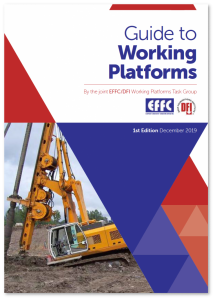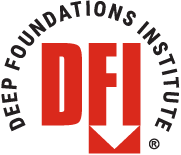EFFC/DFI Working Platforms Task Group
The EFFC/DFI Working Platforms Task Group pools the experiences across the membership of EFFC and DFI to collaborate on the critical issue of improving the safety of working platforms. Working platforms are used by everyone that accesses a site, particularly cranes and drilling machines.

Group Chair
Peter Faust, Dipl.-Ing.
Malcolm Drilling Company, Inc.
pfaust@malcolmdrilling.com
Peter Faust has 30 years of professional experience in the design and construction of foundations. He graduated from Technical University Graz in Austria with a Masters in Geotechnical Engineering. After being involved in project management and engineering of large and complex infrastructure projects in Asia and Europe he did join Malcolm in 2006. He is responsible for business development, strategic planning, and managing corporate communications, and marketing. He serves as DFI’s Trustee and has also contributed to the efforts of EFFC and DFI publishing a series of 3 guidelines about Tremie Concrete, Support Fluid and Working Platforms for Deep Foundations.
Guide to Working Platforms

On a typical construction site, the provision of a safe surface to work on involves and affects a number of the contracting parties (the client; principal designer; general contractor; specialty contractor; platform designer; platform installer or earthworks contractor; platform tester and platform maintainer), and as a consequence, the organization of its design, installation and maintenance can be complex. This document takes each step in turn and describes what good practice is, with reference to documents and resources that have been made available through the EFFC and DFI.
A current initiative of this task group is to update this guide with leading research into which methods of design and verification are the most appropriate to use. It is also hoped that better guidance regarding applicable track pressure can be developed. These results shall enable us to provide better guidance on how to minimize the risk of a failure in the working platform. If you wish to participate in this effort, please contact DFI or the Group Chair directly.
